The board at a glance
If you remove the cooler, we see a very short board with 17.3 cm, in which all voltage transformer ranges have been consistently changed to the left side, while the memory is top or bottom. below and to the right of the GPU. This makes a laudable sense, because no memory module is therefore more in the direct influence of the voltage converter hotspots. But the board has even more small features, which can only be discovered for yourself on closer inspection.
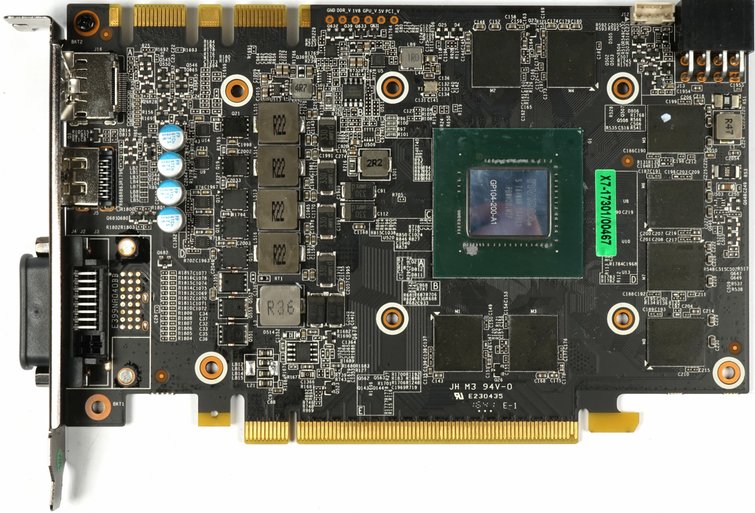
Power supply of the GPU with detours
Shared suffering is half suffering. If you take a closer look, you will discover a total of four phases in the power supply for the GPU, the lowest of which, unlike the other three, is controlled by a kind of VRM pair. But how does this work with the four phases and five control circuits, because the PWM controller has five outputs switched on and not just four?
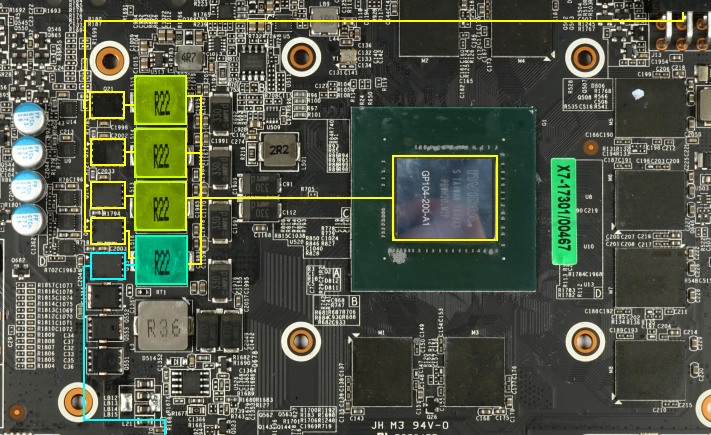
The solution is called Load Balancing and is exactly what AMD could and should have done with the Radeon RX 480 in reference design! Let us take a look at the above image and the feeding of the four phases. While the upper three phases (marked in yellow) are fed exclusively by the PCI Express connector, the fourth phase (marked in green) has two feeding points and thus also two voltage transformer circuits separately controlled from each other. The upper one (marked in yellow) is also supplied by the PCI Express connector, while the lower one (marked light blue) is supplied by the motherboard slot.
Depending on the load, the fourth phase can be fed in variable proportions of both supply rails, which excludes overloading of the motherboard slot! If AMD had had enough backbone at the time and soldered an 8-pin jack, such a solution would have been the better and cleaner way. So we see four phases and five control loops. Smart.
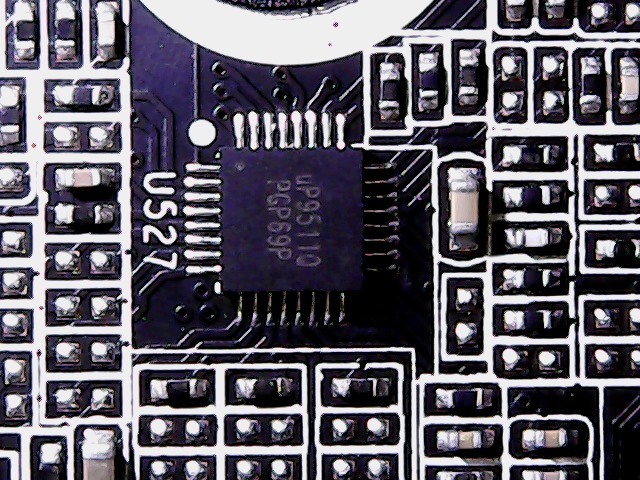
The uP9511 used by UPI Semiconductur is a modern multi-phase Synchronous Buck controller that can regulate up to 6 (+2) phases simultaneously and supports three operating modes using PSI (Integrated Energy Saving Interface): (a) all phases at full load, (b) dynamic phase count/distribution at partial loads, and (c) the use of one or only fewer phases for low loads (up to idle). With this controller, load balancing can also be implemented quite advantageously. Things like OpenVReg 4+ are of course also part of the feature list of the controller. The five occupied outputs then control an uP1962S as a gate driver.
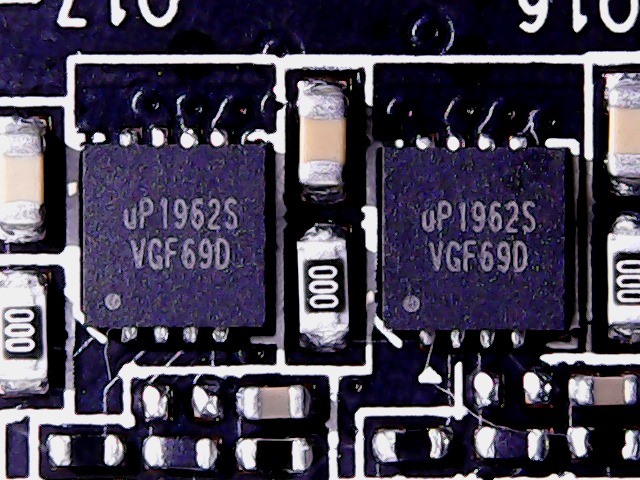
Each of the five control circuits is realized via an AOE6930 from Alpha & Omega Semiconductor. These chips are Dual Asymmetric N-Channel AlphaMOS, which combine the MOSFET of the high and low sides together with the Schottky diode in a common package.
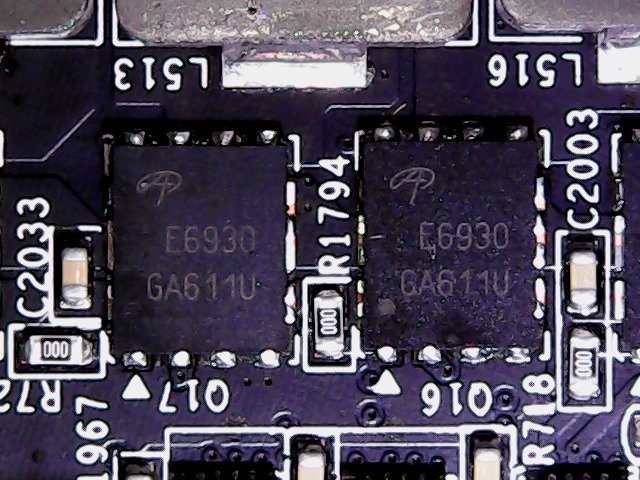
The memory and its power supply
Micron GDDR5 modules are now used in memory. The eight modules each have a capacity of eight gigabits (32x 256 MBit), which can be operated at voltages between 1,305 and 1.597 volts, depending on the required clock.
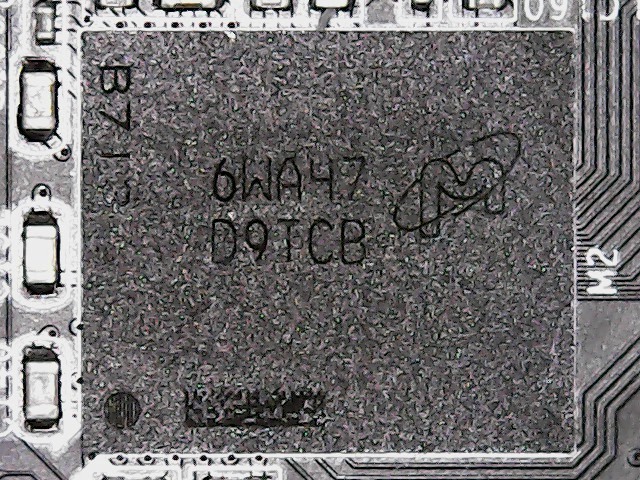
A simple Buck controller in the form of UPI Semiconductor's uP1542S controls a power supply phase for the memory, which is also powered from the motherboard slot. Since you can't use balancing here, the flexible splitting in the fourth GPU phase makes sense.
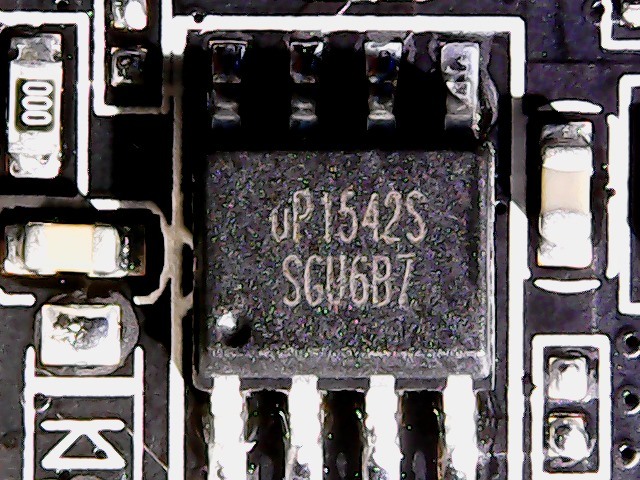
The high-side is equipped with a MDU1511 and the low-side with two parallel MDU1511. All of the three Single-N-Channel Trench MOSFETs are from Magna Chip.
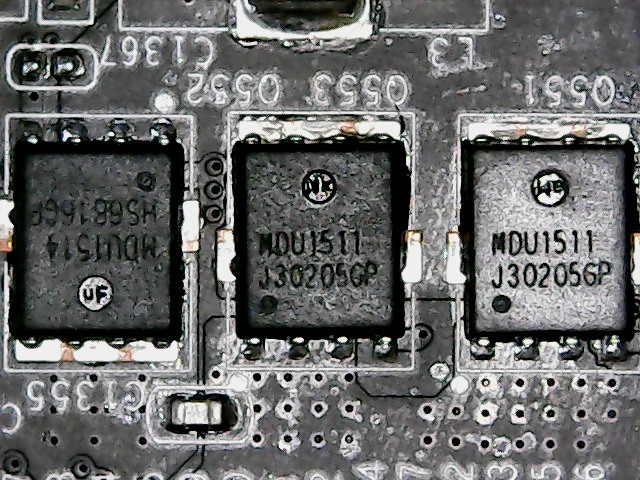
Coils and other components
Both the GPU and memory power supply are equipped with half-height, encapsulated ferrite core coils for machine manufacturing, which have only been soldered on top. Since these coils are arranged among each other and are also cooled together, they have a similar installation height despite different inductors. Therefore, the use of coils from different manufacturers is certainly the case, since there are hardly any so different coils with the same height within a model series.
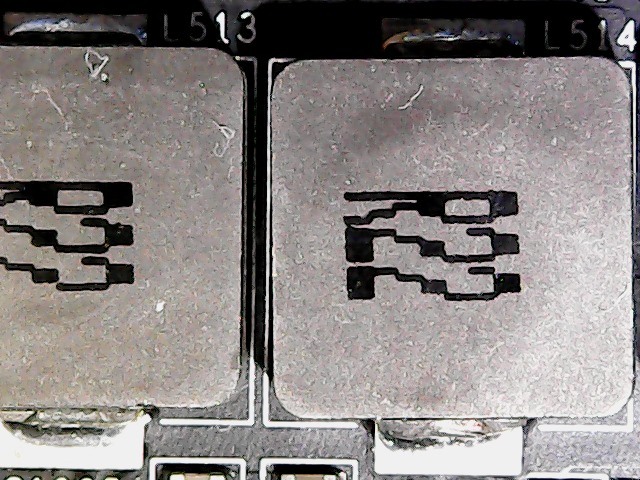 |
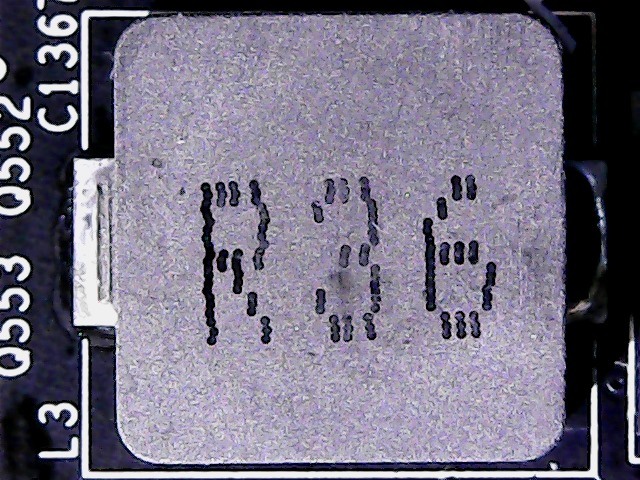 |
A class-standard INA3221 is responsible as a monitoring chip for the input flowing currents and adjacent voltages. A total of two shunts for the two 12V supply phases (mainboard slot, PCI express socket) each help to determine the currents flowing from there via the resulting voltage drop.
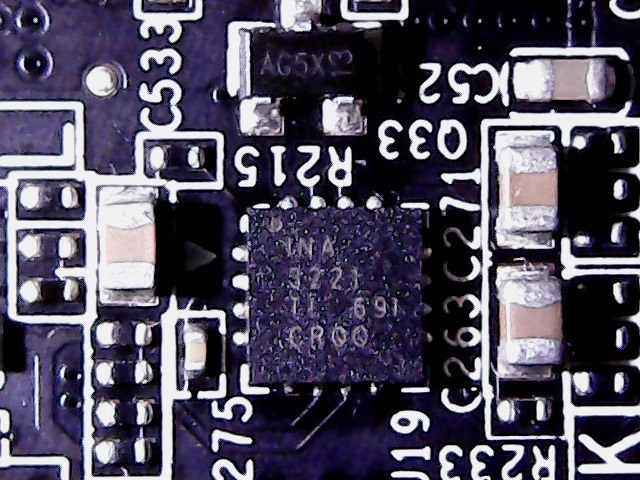 |
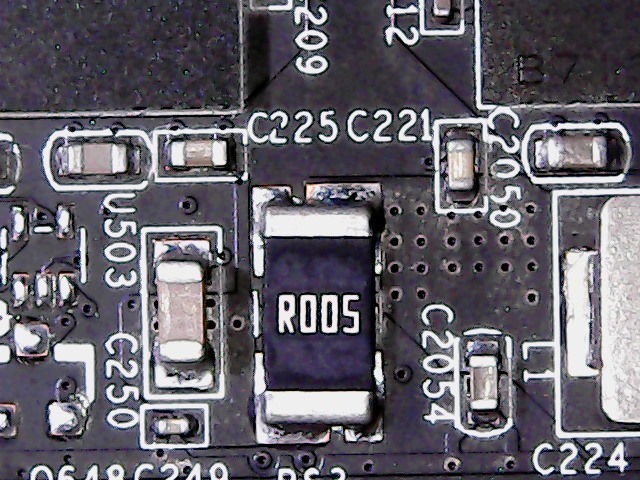 |
With the EPROM Winbond 25040, Galax relies on a simple single BIOS, the power supply of which was realized separately and in the immediate vicinity via its own small buck controller.
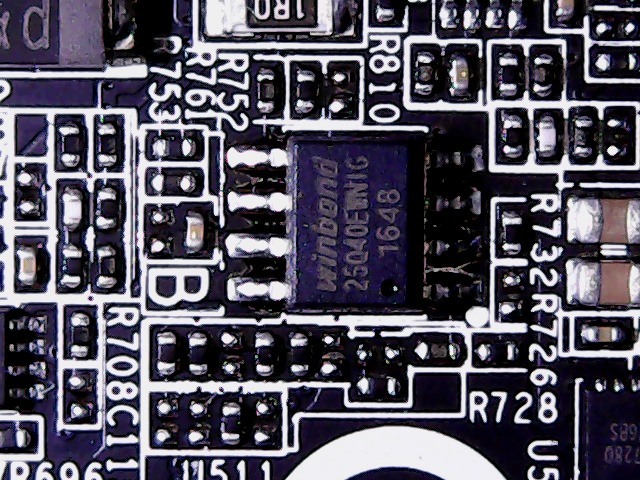
The back of the board no longer shows any secrets, so we can complete this section with it. The video signal preparation and remaining components are the usual standard food and therefore not worth further analysis.
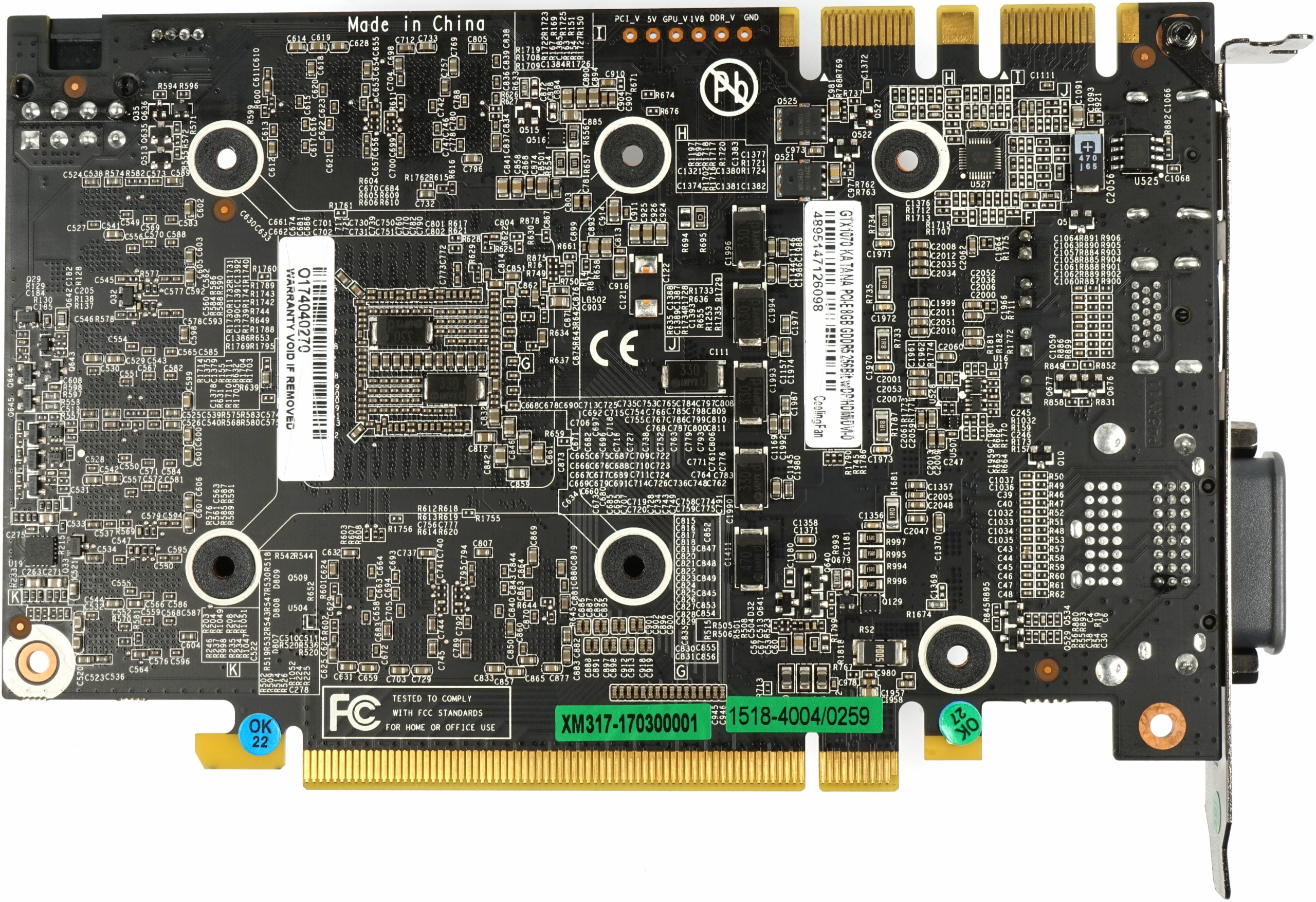



















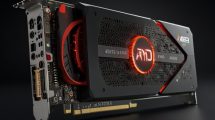













Kommentieren